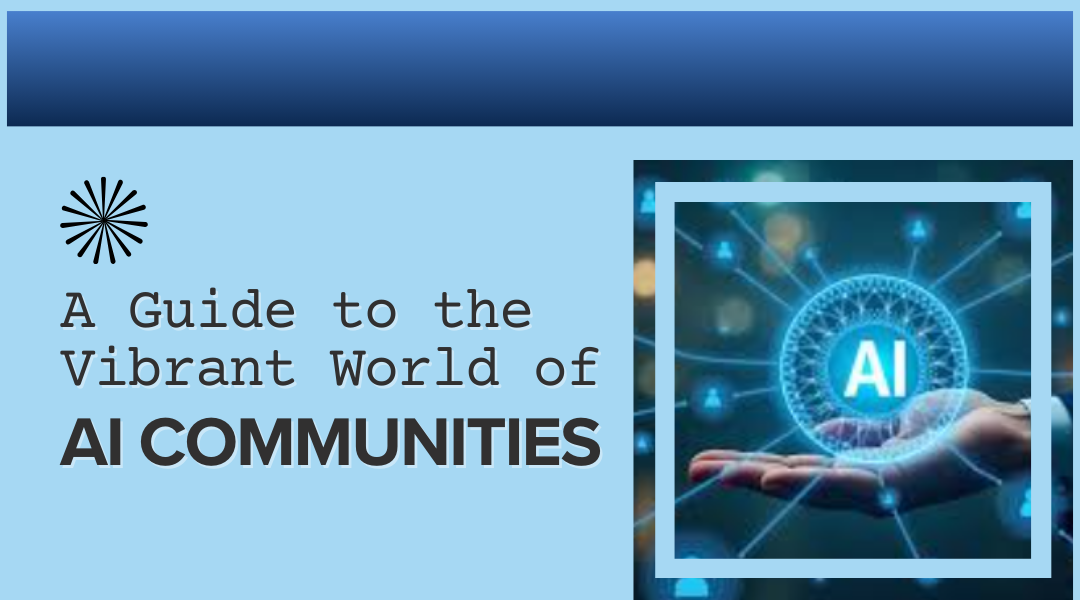Learning about artificial intelligence can sometimes feel like a solitary pursuit, but nothing could be further from the truth. Some of the most powerful learning and innovation happens not in isolation, but within dynamic communities of enthusiasts, experts, and curious beginners just like you. Tapping into these networks can transform your journey from a series of online tutorials into a rich, collaborative adventure. Here’s how to find your people and start growing together.
The Digital Watering Holes: Where Conversations Never Sleep
The internet is the lifeblood of the global AI community, offering spaces for every niche and question. Beyond the well-known forums, consider diving into more specialized platforms.
- Where to Look: Discord and Slack host incredibly active communities built around specific interests, like NLP (Natural Language Processing) or computer vision. These are less like bulletin boards and more like virtual coffee shops where real-time conversations about cutting-edge papers, coding snags, and career advice flow constantly. For a more structured approach, Kaggle isn’t just for datasets; its discussion forums are filled with practitioners dissecting models and helping each other improve their competition scores. The key is to lurk for a bit, get a feel for the culture, and then jump in with a specific, well-framed question about a problem you’re facing.
The Power of Proximity: Learning in the Same Room
While digital connections are invaluable, there’s an undeniable energy to sharing physical space with like-minded people. Local meetups and clubs provide mentorship, inspiration, and accountability that can propel your learning forward.
- Making the Connection: Platforms like Meetup.com or Eventbrite are great, but also check the event calendars at local universities, tech incubators, and public libraries. Don’t just attend—participate. Go to a “build night” where a robotics club is testing sensors, or a workshop where someone is demonstrating how they used a language model for a creative writing project. Bring your curiosity and a willingness to ask “dumb” questions. Often, explaining a concept to a complete beginner is just as valuable for the expert as it is for you, creating a beautiful symbiotic learning environment.
The Guided Journey: Structured Learning with Peers
Self-paced online courses are fantastic, but they can lack the accountability and direct feedback of a live setting. Virtual workshops and cohort-based courses solve this by creating a shared learning experience.
- How to Engage: Seek out live, interactive workshops offered by platforms like Udacity or even through professional associations like the IEEE. The value isn’t just in the instructor’s lecture; it’s in the breakout room discussions, the shared struggle with a tricky coding exercise, and the Slack channel that stays active long after the workshop ends. You’re not just learning a skill; you’re building a cohort, a group of peers who will likely become part of your professional network for years to come.
The Open-Source Playground: Learning by Contributing
There’s no better way to solidify your skills than by applying them to a real-world project. The open-source ecosystem welcomes contributors of all levels and is one of the most rewarding ways to learn.
- Getting Your Feet Wet: On GitHub, look for repositories tagged with labels like “good first issue,” “help wanted,” or “beginner-friendly.” Your first contribution doesn’t have to be writing a complex algorithm. It could be improving documentation, fixing a typo in a tutorial, writing a test case, or translating a user interface. Submitting that first pull request (PR) is a rite of passage. The feedback you get from project maintainers is pure gold—a direct line to experienced developers who can teach you best practices you won’t find in any textbook.
The Ultimate Test: Innovation Under Pressure
Hackathons are the crucibles where theory meets practice. These intense, time-bound events are less about winning and more about the experience of building something from scratch with a team of strangers.
- Taking the Plunge: Sites like Devpost list online and in-person hackathons, many with an AI/ML track. Don’t feel you need to be an expert to join. Teams need a variety of skills: idea generation, UI design, data preparation, presentation, and storytelling. Sign up, be honest about your skill level, and embrace the chaos. The goal is to learn how to learn quickly, collaborate effectively, and present your ideas—skills far more valuable than any prize.
Conclusion: You Are Not a Solo Practitioner
The journey into AI is not a lonely trek; it’s a community pilgrimage. The most successful people in this field are those who actively engage with their tribes—asking questions, sharing failures, contributing code, and cheering on others. These communities provide the crucial ingredients that solo study cannot: mentorship, inspiration, accountability, and the simple joy of shared curiosity.
Your next breakthrough might come from a conversation in a Discord channel, a piece of feedback on a GitHub commit, or a partnership formed at a local meetup. By finding your tribe, you stop just consuming knowledge and start participating in its creation. So put yourself out there. The community is waiting for you.
